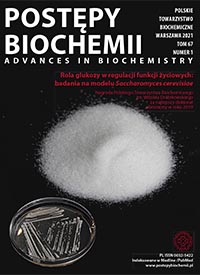The role of RIPK4 in epidermis physiology.
DOI:
https://doi.org/10.18388/pb.2021_370Abstract
Proteins which regulate morphogenesis of the epidermis ensure its proper construction and function and mutations or abnormal expression
of those proteins impact epidermal function. One recently described protein is Receptor Interacting Serine/Threonine Kinase 4 (RIPK4).
Mutations in RIPK4 cause the autosomal-recessive form of Bartsocas-Papas syndrome and Popliteal Pterygium Syndrome the Aslan type. In mice, deletion of Ripk4 (Ripk4-/-) leads to premature death of neonates caused by numerous skin adhesions. RIPK4 regulates development and maintenance of differentiation and proliferation homeostasis of keratinocytes, as well as inflammation. RIPK4 also appears to act as a tumor suppressor in skin, since expression is decreased in squamous skin carcinoma and inducible deletion in mice facilitates induction and growth of papillomas and squamous skin carcinomas in chemical carcinogenesis. The review describes the RIP family, the engagement of RIPK4 in differentiation of the epidermis and consequences resulting from its improper expression.
Downloads
Downloads
Published
Issue
Section
License
Copyright (c) 2021 Advances in Biochemistry

This work is licensed under a Creative Commons Attribution 4.0 International License.
All journal contents are distributed under the Creative Commons Attribution-ShareAlike 4.0 International (CC BY-SA 4.0) license. Everybody may use the content following terms: Attribution — You must give appropriate credit, provide a link to the license, and indicate if changes were made, ShareAlike — If you remix, transform, or build upon the material, you must distribute your contributions under the same license as the original. There are no additional restrictions — You may not apply legal terms or technological measures that legally restrict others from doing anything the license permits.
Copyright for all published papers © stays with the authors.
Copyright for the journal: © Polish Biochemical Society.




